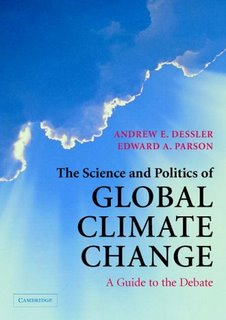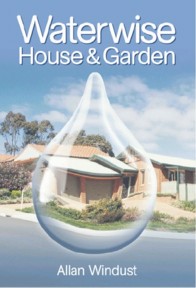In the August 2005 edition of Cosmos magazine (http://cosmosmagazine.com/), there was an interview with string theory expert Michio Kaku. He provided another example of the muddleheaded, soggy pantheistic thinking that seems to come from many theoreticians. He says:
"I would say that I lean toward the God of Einstein and Spinoza; that is, a God of harmony, simplicity and elegance, rather than a personal God who interferes in human affairs."
"The universe is gorgeous, and it did not have to be that way. It could have been random, lifeless and ugly but instead it is full of rich complexity and diversity."
Indeed it is true that there is an asthetic quality to the universe, but how so and what? Supernovae remnants are truly beautiful viewed from a safe distance, but to any prospective lifeform in their path the beauty is moot. Rather, they are agents of destruction. So, we might say that the beauty of the universe is the echo of the voice of something beyond (call it God if you will) rather than the direct voice of God (following Tom Wright in his book Simply Christian).
Likewise, why isn't the universe (or maybe from the string/brane theorists perspective - the multiverse) devoid of life? This is a question that demands an answer better than, "that is simply the way it is" (so John Polkinghorne) and one which may equally have the answer "God" and "not-God" (so George Ellis). But what sort of god?
Of course, in science we now know more about how the experiment affects what you observe. For example, if a single electron is fired at two slits and a screen is placed behind them, then an interference pattern is observed. The electron behaves like a wave. However, if a detector is put at one of the slits, an interference pattern is not observed. So, what is my point?
If we seek to observe the universe in its mathematical form, studying its fundamental structure, then that is the sense of God/god we will observe. Harmony and elegance are a strong driving force in theory. However, as Kaku notes, from a fundamental simplicity arises great complexity. Furthermore, it is a myopic theorist who can reduce everything to the most basic level of description - this is a reducitonist slight of hand (see Murphy & Ellis, On the Moral Nature of the Universe: Theology, Cosmology & Ethics). Therefore, since there are multiple levels of description of the universe, so there are multiple ways of viewing God.
The Abrahamic faiths speak of a God who interacts, not interferes with human affairs as Kaku would say. It is fine for him to dismiss such a god on the view of his physics, but in the full orb of human endeavour, it is a soggy myopism that simply won't do.
Furthermore, the reflections of the article's author are no less soggy. She writes
"felt freed,no longer dragged down by the sordid parameters of existence: the inexorable passage of time, ageing, death, oblivion ...there were other dimensions, parallel worlds, multiple universes far beyond anything an engineer carp could imagine. In the course of two hours I had become a convert to string theory and maybe even a believer in a God that composed the harmony of the Universe."
Again, we'd like to think that we can transcend ageing and death by deep contemplation harks back to the man in the save - is she a wannabe Platonist? If Kaku is an evangelist then the author is now a disciple, but it is a half completed gospel.
Diatribe on a variety of topics, attempting to link science, faith and philosophy, as well as discussion on pedagogy, blended learning and Web 2.0.
Erstaunen bin ich da.
Wednesday, May 31, 2006
Monday, May 15, 2006
Review: The Science and Politics of Global Climate Change

The Science and Politics of Global Climate Change: A Guide to the Debate, Andrew E. Dessler and Edward A. Parsons, Cambridge University Press, 2006
It is bewildering at times to examine the scientific literature on climate change. This is not to suggest that the evidence for human induced (anthropogenic) climate change is not clear, but there is so much of it. The spin of the sceptics makes nefarious use of ambiguities, uncertainties and work in progress. It becomes worse when we enter the world of policy. Given that anthropogenic climate change is a reality, how should we respond? What policies should be made now?
Dessler and Parsons do a pretty good job at surveying the science and the policy debate until now. As a scientist, the policy can drift over my head, but it is important to understand the difficulties in decision-making, as well as the mendacity involved.
Chapter 1 presents a brief background to the science, the rhetoric of the sceptics and policy history. Chapter 2 provides a useful distinction when approaching the debate. Science deals with positive claims – it is raining, greenhouse gases have warmed the climate, smoking causes cancer. These positive claims may be used as hypotheses to test, argued about in the peer-reviewed literature (p26), which they claim as a power filter for bad science (though I seem to recall a Nature article suggesting much nonsense still gets published and repeatedly (mis)quoted). It does a fair job, and when a particular view dominates the literature, consensus, not conspiracy is the likely reason (Miranda Devine of the Sydney Morning Herald take note). It should be noted (as Dessler & Parsons do) that fair reporting of the issues doesn’t mean giving equal space to the fringe sceptics (and I say fringe because the consensus is warming) – this isn’t balance, this is trying to sell papers.
Policy, ethics, philosophy and religion deal with normative claims – how should things be? Hence, global warming due to greenhouse gases from human activities is thinning and melting the artic ice caps is a positive statement. That we should seek to preserve the Inuit lifestyle or conserve polar bears because they have a right to exist is a normative statement.
Problems occur when the two are (invariably) mixed. When scientists make normative claims, these claims may be provoked by their positive claims, but they are now speaking as citizens and not scientists per se. Personally, I fully support a scientist making a normative claim so long as it is clear this is what is being said (and likewise for politicians, journalists, etc). Dessler and Parsons note that these two come together necessarily in scientific assessments (like IPCC groups II & III).
Chapter 3 is a good summary of the science, with the various climate proxies (ice cores, corals, tree rings, etc) mentioned with a discussion of the uncertainties. Various mechanisms are discussed and dismissed as being the cause of the current warming. Also discussed are the various scenarios used in the IPCC assessment. These are a source of uncertainty that sceptics often ignore. Yes, there are uncertainties in the science as to some feedbacks. There is also great uncertainty as to how humanity will modify its behaviour in terms of emissions. I suspect that it will take a big stick to make many nations reduce emissions in a dramatic sense. Furthermore, whereas I don’t demonise technology, as a Christian I certainly don’t worship it and don’t expect it to save us all. There will be more that technological fixes required to solve our energy needs and climate woes.
Chapter 4 continues to examine emission scenarios by looking at adaptation (how will we cope – well fine for rich countries but Bangladesh, the Pacific Islands and polar bears?), mitigation (changes we need to make now – like fund alternate energy research please Mr Howard, not just your coal mates) and geoengineering (the wishful, technology worship). Dessler and Parsons come out on the side of start mitigation now, it will cost us less in the long run. Insurance is a good analogy, you pay for what you don’t expect and certainly hope will not happen just in case it does. Given what is expected for climate change, what is a few % GDP?
Chapter 5 will be hard going for the non-policy types. Essentially, they hold out hope for a Kyoto like arrangement, an internationally coordinated effort some time down the track. Making people pay for what they emit is seen as a powerful motivator to cap emissions. Likewise, whilst waiting for everyone to play together, they put their hope in bilateral agreements such as between China and the USA. An interesting observation in this chapter (see also Global Warming: A Very Short Introduction, Mark Maslin) is that those who readily accept the need for regulation are more likely to accept the evidence for climate change and hence the need to act, as opposed to the free marketeers of the world. Given that the free marketeers often seem to be in control, we are in trouble.
This book makes for good reading for those who might be interested in getting into the process rather than merely cheering or booing from the sidelines. Given the cognitive/ideological divide mentioned above, presenting facts will never be enough (until it is too late?). Furthermore, books like The Weather Makers (Tim Flannery) and Climate Change Begins at Home (Dave Reay) give us something to do ourselves whilst waiting and agitating for the sea change at the top.
Monday, May 01, 2006
Book review: Waterwise House & Garden

Waterwise House & Garden, Allan Windust, Land Links, 2003
50% or more of Australian suburban water usage consists of garden watering. Currently living in a rental property means being stuck with a large lawn and water hungry roses, but we leave the watering to God.
When eventually (hopefully) we do buy, I’ll be taking some gardening tips from Allan Windust. This book is a moderately technical guide to using water wisely in the garden. After highlighting the climate change (chapter 1) and water usage issues (chapter 2), the importance of plants (chapter 3) and the spin offs of good water management (chapter 4), Windust goes into detail on how to detail about water management.
There are many simple household solutions, from shorter showers to collecting water in buckets or containers (although speaking from experience, this can be tedious). Windust discusses a variety of water efficient sprinkler systems, agreeing with Crabb (see Zadok Perspectives #90) that many gardens are over-watered. Water tanks and water recycling are also discussed (chapter 6). The chapter on mulching will teach you everything you ever wanted to know about manure! There is also a chapter on designing your garden and constructing various microclimates and an extensive large appendix on various native plants.
This book really does look like an essential guide for the water conscience gardener.
Subscribe to:
Comments (Atom)